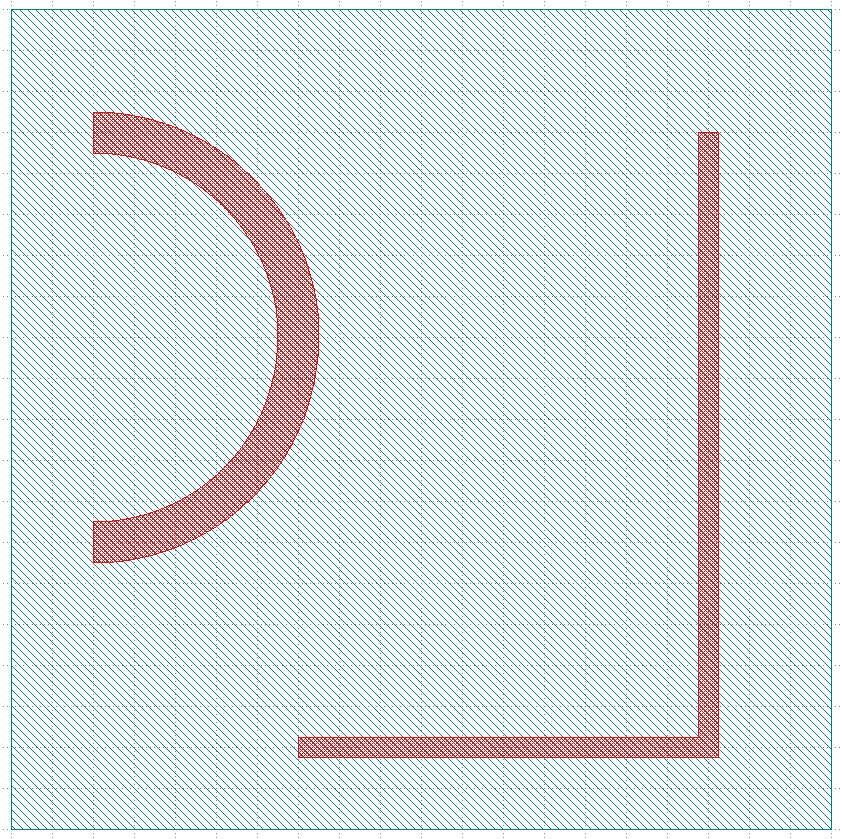Layout Filters
A number of filters are defined that assist in GDSII file creation. These are used to make a layout adhere to GDSII standards, such as maximum length of a Path or Boundary element.
The
TECH.GDSII.FILTERsetting in the technology is typically ai3.ToggledCompoundFilterthat contains several subfilters, such that Paths and Boundaries adhere to a maximum length and Path elements for optical waveguides are automatically converted to Boundaries so that perfect control over the sidewalls is achieved.The
TECH.GDSII.NAME_FILTERsetting in the technology is typically ai3.NameScrambleFilterthat ensures only valid characters are used in GDSII cell names and the cell names adhere to a maximum length.
Specific filters
Filter that cuts a closed shape into areas with a minimum number of vertices. |
|
Filter that cuts a closed shape into areas with a minimum numer of vertices |
|
Filter that converts Path elements into Boundary Elements |
|
Filter that flattens all layout Reference Elements with a transformation that is not along Manhattan directions |
|
Filter for removing invalid characters from a string (e.g. PCell's name.). |
|
Filter for scrambling a Structure's name. |
|
Raise an error when a PCell or Library has a wrong name |
|
Filter that lets all LayerElements pass that are on the supplied layer list. |
|
Filter that blocks all LayerElements that are on the supplied layer list. |
|
Filter object that removes all items where is_empty() returns True |
Base classes
base class that processes any IPKISS primitive (does type checking where needed). |
|
Compound filter in which filters can be turned on or off by doing filter['filter_name'] = True|False Only for named filters! |
Example
# Example of how to use layout filters
from ipkiss3 import all as i3
import numpy as np
route_layer = i3.Layer(0)
doc_layer = i3.Layer(1)
# Filter to be applied to GDSII export
# - Cut path elements that are longer than 50 vertices in smaller pieces
# - Remove the doc_layer
custom_filter = i3.ToggledCompoundFilter()
custom_filter += i3.PathCutFilter(
name="cut_path",
max_path_length=50,
grids_per_unit=int(i3.TECH.METRICS.UNIT / i3.TECH.METRICS.GRID),
overlap=1,
)
custom_filter += i3.LayerFilterDelete(
name="layer_no_export",
layers=[doc_layer],
)
# Make a long path
angles = np.linspace(0, np.pi, 100)
xs = 5 * np.sin(angles)
ys = 5 * np.cos(angles)
long_shape = i3.Shape(points=[(x, y) for (x, y) in zip(xs, ys)])
long_path = i3.LayoutCell(name="cell_long_path")
long_path.Layout(elements=[i3.Path(layer=i3.Layer(0), shape=long_shape, line_width=1)])
short_path = i3.LayoutCell(name="cell_short_path")
short_path.Layout(elements=[i3.Path(layer=i3.Layer(0), shape=[(0.0, 0.0), (10.0, 0.0), (10.0, 15.0)], line_width=0.5)])
top_cell = i3.LayoutCell(name="example_filters")
top_layout = top_cell.Layout(
elements=[
i3.SRef(long_path, (0.0, 0.0)),
i3.SRef(short_path, (5.0, -10.0)),
i3.Rectangle(layer=doc_layer, center=(8.0, -2.0), box_size=(20.0, 20.0)),
]
)
top_layout.visualize()
# Write GDSII with default filters
layer_map = i3.AutoGdsiiLayerOutputMap()
top_layout.write_gdsii("test_gds_default.gds", layer_map=layer_map)
# Write GDSII with our custom filter
top_layout.write_gdsii("test_gds_custom.gds", filter=custom_filter, layer_map=layer_map)


With default filter: Path converted to Boundary, not cut (not too long), two layers present.

With custom filter: Path not converted, but cut in pieces of max 50 vertices, layer 1 removed.